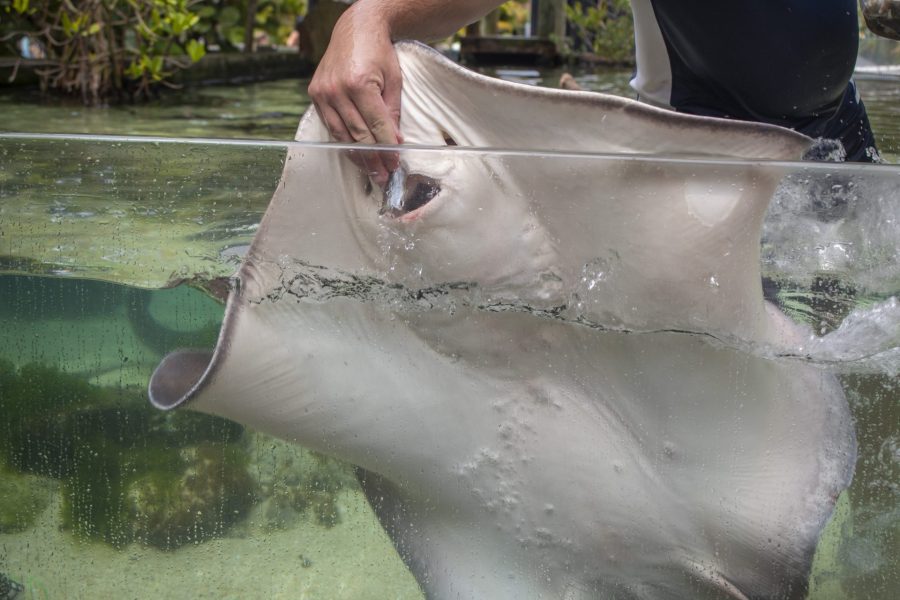Feeding stingrays is not as simple as just leaving food out. Brevard Zoo explains that each of their eight rays receives individual, hand-fed meals to ensure they are receiving healthy and well-balanced diets. The rays are fed fish, squid, and shrimp, with the volume adjusted based on their size and liver condition. The rays are also fed a vitamin supplement during their morning meal, which includes iodine for thyroid health. The rays are fed twice daily, with their afternoon feedings often given in puzzle balls for enrichment. The zoo emphasizes the importance of variety for a well-balanced diet and notes that their rays’ food preferences can change over time.
Stingrays are majestic sea creatures that often fascinate people with their unique appearance and friendly behavior. Many visitors at aquariums worldwide enjoy feeding these creatures, but it is essential to know the right way to do it. Here is a guide on how to feed a stingray.
Choosing the Right Food
The first step in feeding a stingray is ensuring you choose healthy food for the creature. Stingrays thrive on a diet of small fish, clams, worms, and squid, which can all be purchased from local pet stores or fish markets. You should always ensure the food is fresh and untreated with chemicals or other additives.
Feeding Techniques
Following the proper procedures to avoid injuring the creature or harming yourself is essential when feeding the stingray. The stingray’s mouth is underneath its body, so you should hold the food between two fingers and place it near the mouth. As the creature approaches, gently release the food, allowing it to suck and swallow it.
Ensuring Safety
While stingrays are not aggressive, they can be dangerous if provoked or mishandled. Always remain calm and move slowly, and do not overcrowd the stingrays, as this can cause them to become stressed. When feeding a stingray, do not approach it from behind or touch its tail, as this can cause discomfort or injury.
Conclusion
Feeding a stingray can be a rewarding experience for adults and children, but it must be done safely and correctly. Make sure to choose the right food, follow the correct feeding techniques, and prioritize your and the creatures’ safety. With these tips, you can enjoy an up-close encounter with these beautiful sea creatures while protecting their well-being.


